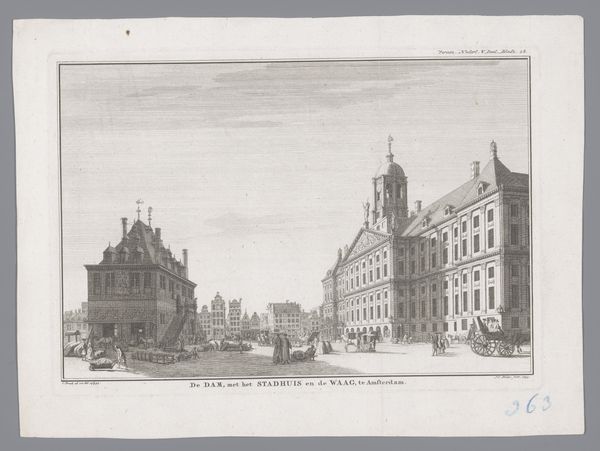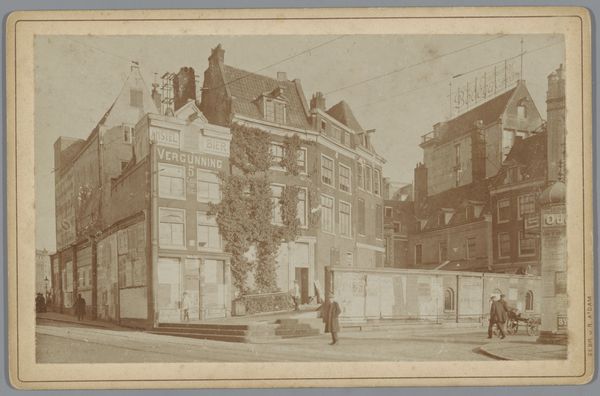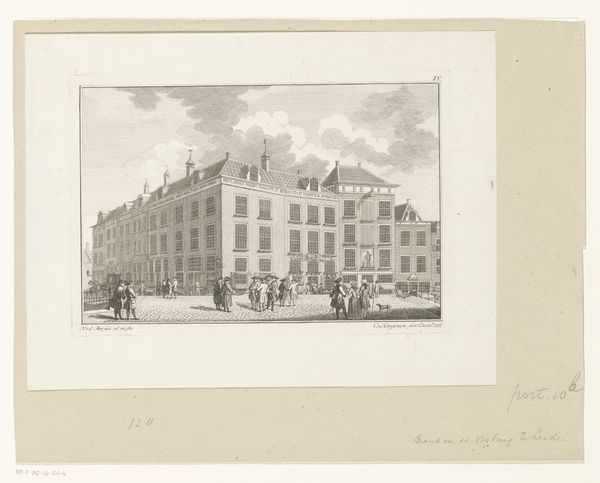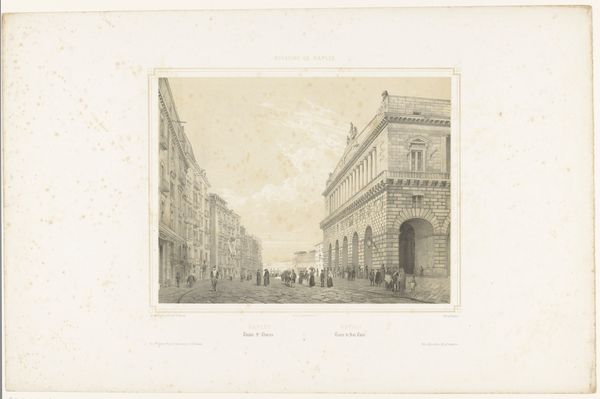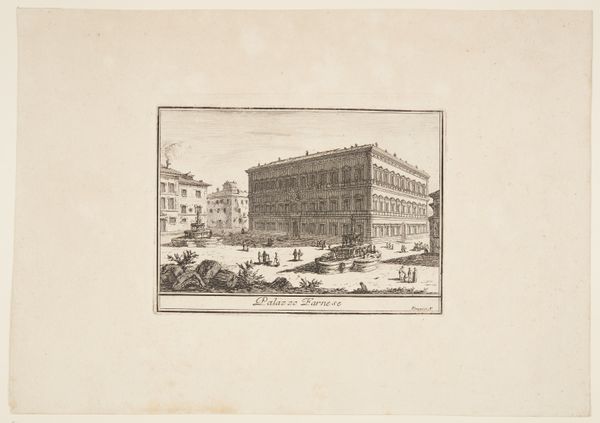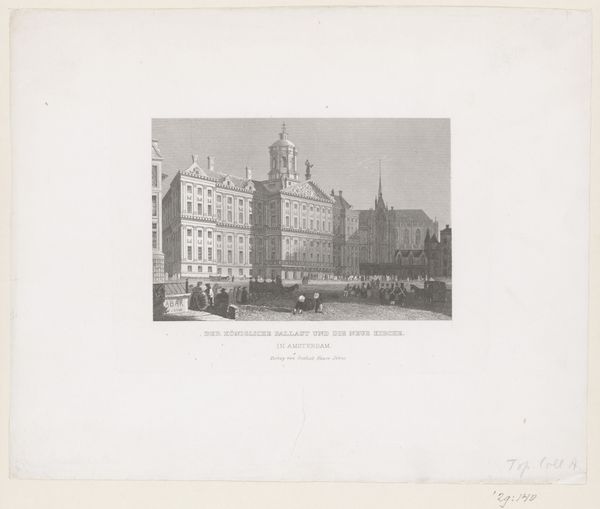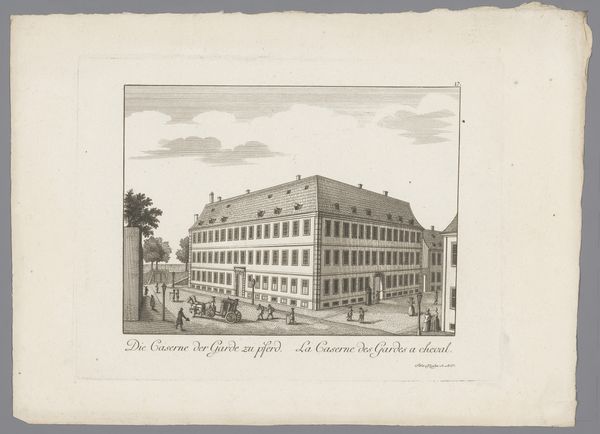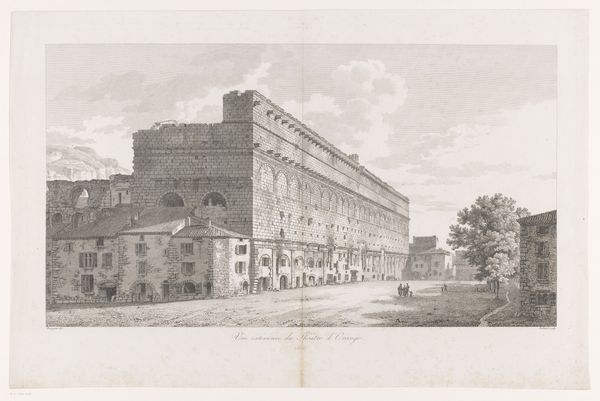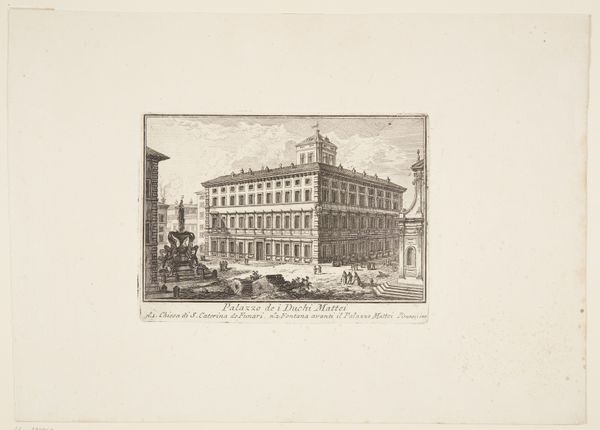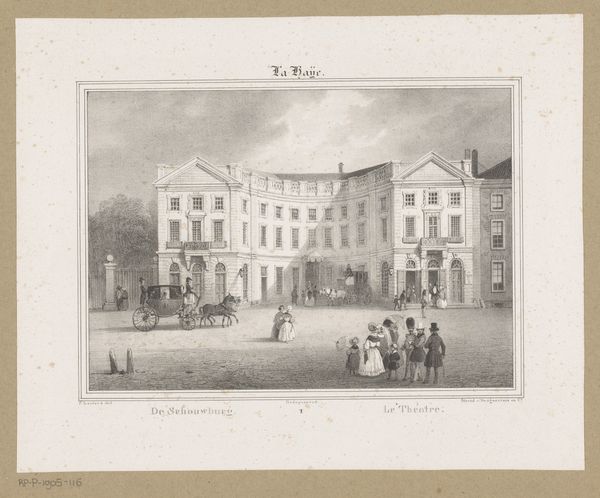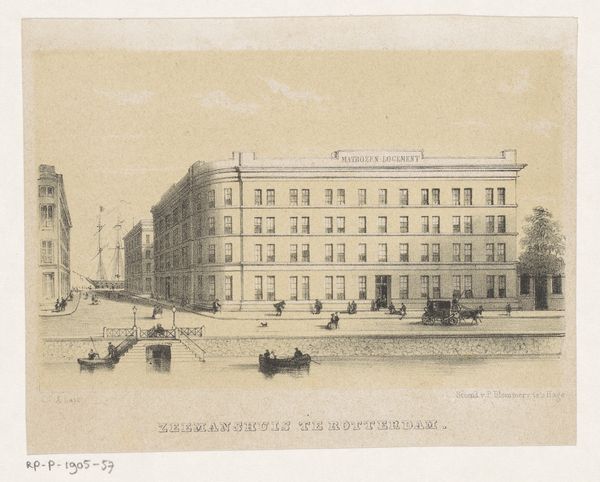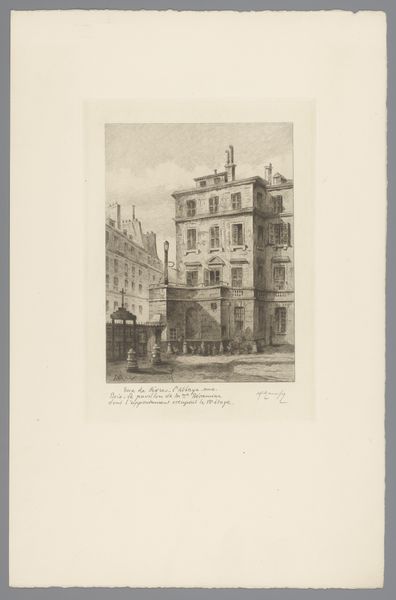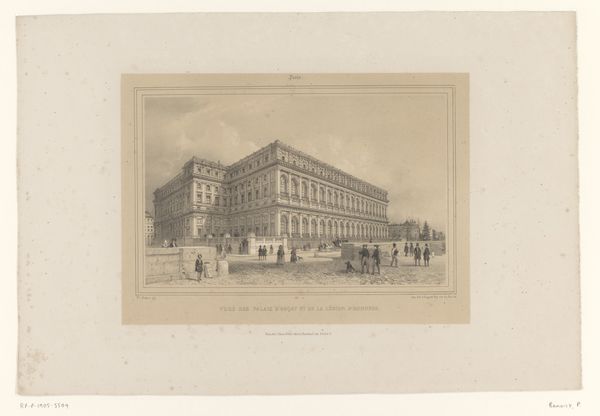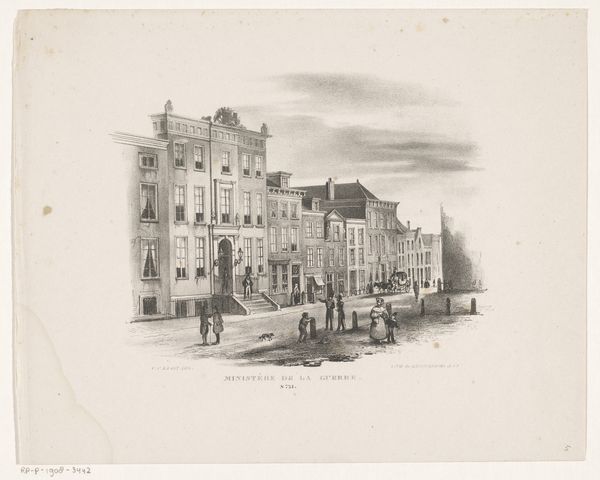
Hoofdkantoor van de Handel-Maatschappij in Amsterdam c. 1847 - 1863
0:00
0:00
print, etching
#
dutch-golden-age
# print
#
etching
#
cityscape
Dimensions: height 182 mm, width 290 mm
Copyright: Rijks Museum: Open Domain
Curator: What strikes me immediately is the ordered silence, a sort of hushed reverence surrounding these imposing buildings. Editor: This is Johannes Hilverdink's print, “Hoofdkantoor van de Handel-Maatschappij in Amsterdam,” created somewhere between 1847 and 1863. What we're looking at is an etching depicting the headquarters of the Dutch Trading Society in Amsterdam. It’s part of the Rijksmuseum collection. Curator: It feels incredibly…buttoned-up, doesn’t it? Even with the figures dotted about, there’s a lack of bustling energy you might expect from a centre of commerce. It makes me consider the narratives of power embedded within the architecture itself. How does a building communicate authority? Editor: Exactly! And it's worth noting the socio-political implications. This building represents a period of Dutch colonial expansion, fueled by exploitative trade practices in places like Indonesia. Hilverdink's serene rendering perhaps obscures these brutal realities, creating a sanitised image of Dutch prosperity and influence. Curator: There's that ever-present tension isn't there—the art as a propaganda of sorts? Looking closely, you can almost see the different social classes represented: the uniformed authority figure, some middle-class merchants going about their business, and then some laborers at the margins, hinting at the base of this societal pyramid. Editor: Hilverdink was working in a Dutch Golden Age tradition, using etching, of course, but with a very different lens. Where the earlier artists highlighted prosperity in celebratory ways, Hilverdink offers a glimpse into its architecture of the period. I'm seeing how the print shows, on closer view, a bustling street scene with the building serving as a backdrop to ordinary everyday lives. Curator: Indeed. And I appreciate how looking through today's interpretive lens shows the uncomfortable truths art holds and reveals. It feels so removed now but was obviously created with a specific view of the world. Editor: For me, art serves as a way to reveal new truths to challenge my perspective and help see with new eyes. A reminder, ultimately, that history is layered and demands to be fully considered.
Comments
No comments
Be the first to comment and join the conversation on the ultimate creative platform.
